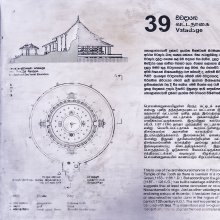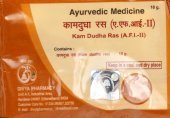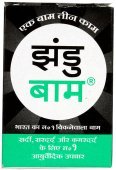Kam, Kāṃ, Kām, Kaṃ: 20 definitions
Introduction:
Kam means something in Buddhism, Pali, Hinduism, Sanskrit, Marathi, Jainism, Prakrit, Hindi, biology, Tamil. If you want to know the exact meaning, history, etymology or English translation of this term then check out the descriptions on this page. Add your comment or reference to a book if you want to contribute to this summary article.
Images (photo gallery)
In Hinduism
Vyakarana (Sanskrit grammar)
Source: Wikisource: A dictionary of Sanskrit grammarKām (काम्).—Augment आम् (ām) applied to तूष्णीम् (tūṣṇīm) just as अकच् (akac) is applied, e.g.; आसितव्यं किल तूष्णीकाम (āsitavyaṃ kila tūṣṇīkāma) M. Bh. on V.3.72.

Vyakarana (व्याकरण, vyākaraṇa) refers to Sanskrit grammar and represents one of the six additional sciences (vedanga) to be studied along with the Vedas. Vyakarana concerns itself with the rules of Sanskrit grammar and linguistic analysis in order to establish the correct context of words and sentences.
In Buddhism
Tibetan Buddhism (Vajrayana or tantric Buddhism)
Source: OSU Press: Cakrasamvara Samadhi1) Kāṃ (कां) is the bīja associated with Kāmarūpa, according to the Cakrasaṃvara-maṇḍala or Saṃvaramaṇḍala of Abhayākaragupta’s Niṣpannayogāvalī, p. 45 and n. 145; (Cf. Cakrasaṃvaratantra, Gray, David B., 2007).—The Cakrasaṃvara mandala has a total of sixty-two deities. [...] Three concentric circles going outward, the body, speech and mind wheels (kāya-vāka-citta), in the order: mind (blue), speech (red), and body (white), with eight Ḍākinīs each in non-dual union with their Ḍākas, "male consorts".
Associated elements of Airāvatī and Vajradehaka:
Circle: vākacakra [=vākcakra?] (speech-wheel) (red);
Ḍākinī (female consort): Airāvatī;
Ḍāka (male consort): Aṅkurika;
Bīja: kāṃ;
Body-part: armpits;
Pīṭha: Kāmarūpa;
Bodily constituent: akṣiṇī (eyes);
Bodhipakṣa (wings of enlightenment): prajñendriya (faculty of wisdom).
2) Kaṃ (कं) is associated with Kaliṅga, Śyāmādevī and Subhadra:
Circle: vākacakra [=vākcakra?] (speech-wheel) (red);
Ḍākinī (female consort): Śyāmādevī;
Ḍāka (male consort): Subhadra;
Bīja: kaṃ;
Body-part: mouth;
Pīṭha: Kaliṅga;
Bodily constituent: guṇavarti (small intestine);
Bodhipakṣa (wings of enlightenment): samādhibala (power of concentration).
3) Kāṃ (कां) is associated with Kāñcī, Hayakarṇā and Bhairava:
Circle: vākacakra [=vākcakra?] (speech-wheel) (red);
Ḍākinī (female consort): Hayakarṇā;
Ḍāka (male consort): Bhairava;
Bīja: kāṃ;
Body-part: heart;
Pīṭha: Kāñcī;
Bodily constituent: purīṣa (feces);
Bodhipakṣa (wings of enlightenment): samādhibodhyaṅga (awakening of concentration).

Tibetan Buddhism includes schools such as Nyingma, Kadampa, Kagyu and Gelug. Their primary canon of literature is divided in two broad categories: The Kangyur, which consists of Buddha’s words, and the Tengyur, which includes commentaries from various sources. Esotericism and tantra techniques (vajrayāna) are collected indepently.
Biology (plants and animals)
Source: Google Books: CRC World Dictionary (Regional names)Kam in India is the name of a plant defined with Mitragyna parvifolia in various botanical sources. This page contains potential references in Ayurveda, modern medicine, and other folk traditions or local practices It has the synonym Nauclea parvifolia Willd., nom. illeg. (among others).
Example references for further research on medicinal uses or toxicity (see latin names for full list):
· Pl. Coromandel (1795)
· Observ. Naucl. Indic. (1839)
· Species Plantarum (1798)
If you are looking for specific details regarding Kam, for example health benefits, chemical composition, extract dosage, diet and recipes, pregnancy safety, side effects, have a look at these references.

This sections includes definitions from the five kingdoms of living things: Animals, Plants, Fungi, Protists and Monera. It will include both the official binomial nomenclature (scientific names usually in Latin) as well as regional spellings and variants.
Languages of India and abroad
Pali-English dictionary
Source: BuddhaSasana: Concise Pali-English Dictionarykaṃ : (nt.) what thing?

Pali is the language of the Tipiṭaka, which is the sacred canon of Theravāda Buddhism and contains much of the Buddha’s speech. Closeley related to Sanskrit, both languages are used interchangeably between religions.
Marathi-English dictionary
Source: DDSA: The Molesworth Marathi and English Dictionarykāṃ (कां).—ad Why? wherefore? 2 ind An expletive constantly occurring in poetry. Ex. dēśōdēśīñcē jē kāṃ nṛpa ||.
Source: DDSA: The Aryabhusan school dictionary, Marathi-Englishkāṃ (कां).—ad Why? Wherefore?
--- OR ---
kāṃ (कां).—or-
--- OR ---
kāṃ (कां).—or-
--- OR ---
kāṃ (कां).—or-
Marathi is an Indo-European language having over 70 million native speakers people in (predominantly) Maharashtra India. Marathi, like many other Indo-Aryan languages, evolved from early forms of Prakrit, which itself is a subset of Sanskrit, one of the most ancient languages of the world.
Sanskrit dictionary
Source: DDSA: The practical Sanskrit-English dictionaryKam (कम्).—ind. Ved. A particle used as an expletive or enclitic.
--- OR ---
Kām (काम्).—ind. An interjection used in calling out to another.
Source: Cologne Digital Sanskrit Dictionaries: Shabda-Sagara Sanskrit-English DictionaryKam (कम्).—[(u)kamu] r. 1st cl. (kāmayati) To desire: this root is irregular.
--- OR ---
Kam (कम्).—ind. 1. Water. 2. The head. 3. Happiness or happily. 4. An expletive. E. kam to desire, vic aff.
Source: Cologne Digital Sanskrit Dictionaries: Benfey Sanskrit-English DictionaryKam (कम्).—[ka + m] (old acc. s. n. of kim), a particle, Indeed,
— Cf.
--- OR ---
Kam (कम्).—i. 10, [Ātmanepada.] (in epic poetry also [Parasmaipada.], [Hiḍimbavadha] 4, 4; [Rāmāyaṇa] 3, 51, 28), in the pres., impf., imptive., and potent., and optionally in all the other forms, kāmaya. 1. To love, Mahābhārata 1, 2400; [Rāmāyaṇa] 1, 34, 16. 2. To desire, [Sāvitryupākhyāna] 5, 52; to wish, with infin., Mahābhārata 1, 6582; to intend, with infin., Mahābhārata 3, 2249.
— Anom. ptcple. of the pres. kāmayāna, e. g. Mahābhārata 13, 1891; kāmamana (probably to be corrected to kāmayāna), [Rāmāyaṇa] 5, 24, 37; 38.
— Pf. pass. kānta. 1. Loved, [Hiḍimbavadha] 4, 35. 2. Amiable, graceful.
Source: Cologne Digital Sanskrit Dictionaries: Cappeller Sanskrit-English DictionaryKam (कम्).—1. [interrogative] or emphasizing particle, [especially] after [dative] [infinitive]; [enclitic] after nu, su, & hi.
--- OR ---
Kam (कम्).—2. (without [present]), [participle] kānta (q.v.) wish, desire, love. [Causative] kāmayate (ti) the same; kāmaṃ kāmayamāna having a wish.
— anu & abhi wish, desire. ni lust after, long for ([accusative]).
Source: Cologne Digital Sanskrit Dictionaries: Monier-Williams Sanskrit-English Dictionary1) Kam (कम्):—1. kam ind. ([Greek] κεν) well (opposed to a-kam, ‘ill’), [Taittirīya-saṃhitā; Śatapatha-brāhmaṇa] etc.
2) a particle placed after the word to which it belongs with an affirmative sense, ‘yes’, ‘well’ (but this sense is generally so weak that Indian grammarians are perhaps right in enumerating kam among the expletives, [Nirukta, by Yāska]; it is often found attached to a [dative case] case, giving to that case a stronger meaning, and is generally placed at the end of the Pāda, e.g. ajījana oṣadhīr bhojanāya kam, thou didst create the plants for actual food, [Ṛg-veda v, 83, 10]), [Ṛg-veda; Atharva-veda; Taittirīya-saṃhitā v]
3) is also used as an enclitic with the particles nu, su, and hi (but is treated in the Pada-pāṭha as a separate word; in this connection kam has no accent but once, [Atharva-veda vi, 110, 1]), [Ṛg-veda; Atharva-veda]
4) a particle of interrogation (like kad and kim), [Ṛg-veda x, 52, 3]
5) (sometimes, like kim and kad, at the beginning of compounds) marking the strange or unusual character of anything or expressing reproach, [cf. Lexicographers, esp. such as amarasiṃha, halāyudha, hemacandra, etc.]
6) head, [cf. Lexicographers, esp. such as amarasiṃha, halāyudha, hemacandra, etc.]
7) food, [Nirukta, by Yāska]
8) water, [Nirukta, by Yāska; Nighaṇṭuprakāśa]
9) happiness, bliss, [cf. Lexicographers, esp. such as amarasiṃha, halāyudha, hemacandra, etc.]
10) 2. kam [class] 1. [Ātmanepada] (not used in the conjugational tenses) cakame, kamitā, kamiṣyate, acakamata, [Dhātupāṭha xii, 10] to wish, desire, long for, [Ṛg-veda v, 36, 1; x, 117, 2; Atharva-veda xix, 52, 3; Śatapatha-brāhmaṇa; Raghuvaṃśa] etc.;
—to love, be in love with, have sexual intercourse with, [Śatapatha-brāhmaṇa xi; Bhāgavata-purāṇa] :—[Causal] [Ātmanepada] ([Epic] also [Parasmaipada]) kāmayate, -ti, kāmayāṃ-cakre, acīkamata, etc.;
—to wish, desire, long for (with [accusative] or [infinitive mood] or [Potential] [Pāṇini 3-3, 157]; e.g. kāmaye bhuñjīta bhavān, I wish your worship may eat; kāmaye dātum, I wish to give, [Kāśikā-vṛtti]), [Ṛg-veda; Atharva-veda; Taittirīya-saṃhitā; Mahābhārata] etc.;
—to love, be in love with, have sexual intercourse with, [Ṛg-veda x, 124, 5; 125, 5; Śatapatha-brāhmaṇa; Mahābhārata] etc.;
—to cause any one to love, [Ṛtusaṃhāra] (in that sense [Parasmaipada] [Vopadeva]);
— (with bahu or aty-artham) to rate or value highly, [Rāmāyaṇa] :—[Desiderative] cikamiṣate and cikāmayiṣate:—[Intensive] caṃkamyate;
11) cf. [Latin] comis; also amo, with the loss of the initial, for camo; cā-rus for cam-rus: [Hibernian or Irish] caemh, ‘love, desire; fine, handsome, pleasant’; caomhach, ‘a friend, companion’; caomhaim, ‘I save, spare, protect’; [Armenian] kamim.
12) Kām (काम्):—ind. an interjection used in calling out to another, [cf. Lexicographers, esp. such as amarasiṃha, halāyudha, hemacandra, etc.]
Source: Cologne Digital Sanskrit Dictionaries: Yates Sanskrit-English Dictionary1) Kam (कम्):—[(ṅa-u-ma) kāmayati] 10. d. To desire.
2) Aptote. Water.
Source: DDSA: Paia-sadda-mahannavo; a comprehensive Prakrit Hindi dictionary (S)Kam (कम्) in the Sanskrit language is related to the Prakrit words: Kaṃ, Kama.
[Sanskrit to German]
Sanskrit, also spelled संस्कृतम् (saṃskṛtam), is an ancient language of India commonly seen as the grandmother of the Indo-European language family (even English!). Closely allied with Prakrit and Pali, Sanskrit is more exhaustive in both grammar and terms and has the most extensive collection of literature in the world, greatly surpassing its sister-languages Greek and Latin.
Hindi dictionary
Source: DDSA: A practical Hindi-English dictionaryKam in Hindi refers in English to:—(a) little, few, scanty; less; short, small; deficient; (adv) rarely; seldom; ~[akala] stupid, foolish, unwise; ~[asala] crossbreed, hybrid; base; —[umra] young, young in age; —[kimata] cheap, lowpriced; ~[kharca] thrifty, frugal, economical; ~[kharci] thrift, frugality, econony; ~[khvaba] brocade, silk wrought with gold and silver flowers; ~[tara] smaller; lesser; ~[tarina] smallest; least; ~[nasiba] unfortunate; hence ~[nasibi; —kharca bala nashina] economical and yet of a superior quality; low cost, great show..—kam (कम) is alternatively transliterated as Kama.
...
Prakrit-English dictionary
Source: DDSA: Paia-sadda-mahannavo; a comprehensive Prakrit Hindi dictionaryKaṃ (कं) in the Prakrit language is related to the Sanskrit word: Kam.
Prakrit is an ancient language closely associated with both Pali and Sanskrit. Jain literature is often composed in this language or sub-dialects, such as the Agamas and their commentaries which are written in Ardhamagadhi and Maharashtri Prakrit. The earliest extant texts can be dated to as early as the 4th century BCE although core portions might be older.
Kannada-English dictionary
Source: Alar: Kannada-English corpusKaṃ (ಕಂ):—[noun] the organ of sight; the eye.
Kannada is a Dravidian language (as opposed to the Indo-European language family) mainly spoken in the southwestern region of India.
Nepali dictionary
Source: unoes: Nepali-English DictionaryKam is another spelling for कम [kama].—adj. 1. little; few; small amount/quantity; 2. less; adv. at least;
Nepali is the primary language of the Nepalese people counting almost 20 million native speakers. The country of Nepal is situated in the Himalaya mountain range to the north of India.
See also (Relevant definitions)
Partial matches: Or, Kan, Kam.
Starts with (+3150): Kaam-saanchnu, Kaamuktha, Kam aane, Kam kasturi, Kam phung, Kam ron tea, Kam rontea, Kam set, Kam tai, Kam-chon, Kam-kum-karanem, Kam-ta-kai, Kama, Kama Jataka, Kama kasturi, Kama Kusala, Kama Lavanem, Kama Sukh Allikanuyoga, Kama Sutta, Kama-bhoga-tivrabhilasha.
Ends with (+4167): A-candra-arkkam, A-candra-tarakam, A-kam, A-pirakirutalokam, Aaptkam, Aatalootakam, Abhikam, Abhisamdhipurvakam, Abhishakam, Abhyadhikam, Abokam, Abuddhipurvakam, Acakallikarokam, Acakam, Acakamikam, Acakantikam, Acala-calalinkam, Acalalinkam, Acalukam, Acamantakam.
Full-text (+3949): Kams, Kama, Kamdish, Nirgharshanaka, Alpaka, Shantika, Angulipancaka, Auddharika, Sajilo-kama, Jamgala-jamaune-kama, Kankim, Anaka, Aihika, Kacca-kama, Cakacaka, Avashyaka, Daivika, Kamuka, Kama-samcnu, Kamdhara.
Relevant text
Search found 88 books and stories containing Kam, Kam-or-kan-or-kan, Kamorkanorkaṇ, Kamorkanorkan, Kāṃ, Kām, Kaṃ, Kam-or-kan-or-kaṇ, Kaam; (plurals include: Kams, kans, Kamorkanorkaṇs, Kamorkanorkans, Kāṃs, Kāms, Kaṃs, kaṇs, Kaams). You can also click to the full overview containing English textual excerpts. Below are direct links for the most relevant articles:
Garga Samhita (English) (by Danavir Goswami)
Verse 5.20.14 < [Chapter 20 - The Liberation of Ṛbhu Muni During the Rāsa-dance Festival]
Verse 4.20.4 < [Chapter 20 - The Killing of Pralamba]
Verse 1.13.28 < [Chapter 13 - The Liberation of Pūtanā]
Rig Veda (translation and commentary) (by H. H. Wilson)
Shrimad Bhagavad-gita (by Narayana Gosvami)
Verse 6.37 < [Chapter 6 - Dhyāna-yoga (Yoga through the Path of Meditation)]
Verse 2.21 < [Chapter 2 - Sāṅkhya-yoga (Yoga through distinguishing the Soul from the Body)]
Verse 3.26 < [Chapter 3 - Karma-yoga (Yoga through the Path of Action)]
Sahitya-kaumudi by Baladeva Vidyabhushana (by Gaurapada Dāsa)
Text 11.15 < [Chapter 11 - Additional Ornaments]
Text 1.14 < [Chapter 1 - The Purpose of Poetry]
Text 10.102 < [Chapter 10 - Ornaments of Meaning]
Hari-bhakti-kalpa-latikā (by Sarasvati Thkura)
Brihad Bhagavatamrita (commentary) (by Śrī Śrīmad Bhaktivedānta Nārāyana Gosvāmī Mahārāja)
Verse 2.1.64 < [Chapter 1 - Vairāgya (renunciation)]
Verse 2.1.57-59 < [Chapter 1 - Vairāgya (renunciation)]
Verse 2.4.30 < [Chapter 4 - Vaikuṇṭha (the spiritual world)]
Related products


